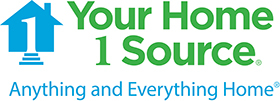
Renters have it pretty easy when they calculate their housing costs: add together your monthly rent, your utility bills and your renter’s insurance premium and you’re done. You may also want to include your security deposit, but chances are high that if you’re a good tenant you’ll get that money back when you move.
For homeowners, the calculation is more complicated. Not only are there some added upfront costs, there are ongoing expenses beyond your mortgage and savings needed for future payments. Educating yourself about these costs is a smart move to make before you move into your new home.
Initial costs of buying a home
While most renters focus on the need to accumulate funds for a down payment, there are other expenses associated with making the transition from renter to homeowner or from one home to another. You don’t need to pay a lender or a real estate agent any fees until the transaction is complete, but you do have to make some other payments, such as:
- Earnest money deposit. When you make an offer on a home, you’ll need to provide a deposit to show that you are a serious buyer. The amount of your earnest money deposit varies according to local market traditions and conditions, sometimes $1,000 is enough and sometimes you need to make a deposit of one or two percent or more of the sales price. As long as you meet all the conditions of the contract, you’ll get your deposit back if the deal doesn’t go through. Otherwise, it will be applied to your down payment.
- Home inspection fee. A home inspection, while not required, is highly recommended on every property so you know the condition and any potential defects. A home inspection fee varies according to your market and the size of the property, but averages $400.
- Appraisal fee. While the lender chooses the appraisal company, as a buyer you need to pay for an appraisal to determine whether the property is valued at or above the sales price. Appraisal fees vary by market and home size, but generally run $400 to $500.
- Other inspections. You may want or need to pay for a termite inspection, a radon inspection and a septic inspection depending on the home you want to buy.
- Down payment. Down payment requirements vary from 3 percent to 20 percent of the home price depending on your loan program, but keep in mind you may be allowed to include gift funds or utilize homebuyer assistance programs to supplement your own funds. Some loan programs, such as VA or USDA loans, have zero down payment options.
- Closing costs. Closing costs vary according to your state and county tax rules, along with your lender’s fees and title insurance costs, but the average in 2016 for a $200,000 home with a 20 percent down payment is $2,128, according to Bankrate.
- Moving expenses. Moving expenses are pretty much the same whether you are renting or buying, but don’t forget to account for them in your housing calculation.
- Necessary home maintenance supplies. When you buy a home for the first time, you’ll need some items that you didn’t need as a renter, when you could call your landlord to take care of maintenance needs. You may need a lawn mower, a ladder, a rake, a water hose, basic household tools, or even a snow shovel depending on where you live.
Ongoing expenses of homeownership
- Mortgage principal and interest. Your biggest ongoing expense will be the principal and interest (P&I) payment on your mortgage. Keep in mind that your P&I payment will stay the same with a fixed-rate loan, but can change if you opt for an adjustable rate mortgage.
- Property taxes. Your property will likely be reassessed annually by your city or county taxing authority, so you may find that your property taxes change over time, often edging upward. Many homeowners pay their property taxes in escrow – this means the lender collects for the actual cost of your property taxes in 12 monthly installments. The lender then pays the annual or semi-annual tax bill on your behalf. If you choose to pay your taxes on your own, make sure you’re setting aside money for the annual bill on a regular basis.
- Homeowner’s insurance. Lenders require you to have homeowner’s insurance to protect your home – and their collateral. Your insurance premium may be collected monthly as an escrow item included with your P&I payment. Homeowner’s insurance premiums are typically higher than renter’s insurance because you are covering the costs to replace your home or other structures on the land in case of disasters such as fire, wind or flood, in addition to providing liability and personal property coverage. Flood coverage may not be required, but if you’re located near streams, rivers, or in a valley, you could be subject to flooding. Review flood maps and costs of coverage with your insurance company.
- Homeowner association dues. If you live in a condo or a community with a homeowners’ association, you’ll also need to pay dues either monthly, quarterly or annually.
- Mortgage insurance. If you have a conventional loan and made a down payment of less than 20 percent, or have an FHA loan, you’ll need to pay mortgage insurance as part of your monthly payment.
- Utility payments. Before you buy a place, get an estimate of monthly utility costs so you can budget for these expenses. You may be paying more for utilities than when you rented, including a water bill, a sewer bill, and gas and electricity depending on where you buy.
- Maintenance costs. Maintenance costs vary according to the age, size and condition of your property, but in general, you should set aside one percent of your home value each year to cover maintenance costs. You may want to purchase a service contract, also called a Home Warranty, which may cover repair or replacement costs of your heating and air conditioning system, and other important components of your home.
- Renovation costs. If you plan to own your home for a long time or want to make some immediate improvements, it’s best to begin setting aside funds for larger renovation or repairs.
Keep in mind that your level of cash reserves for emergencies should be a little higher if you are responsible for maintaining a home, since you never know what issues could arise. On the other hand, you should be able to deduct the interest paid on your mortgage and your property taxes on your federal income taxes, which can offset some of the costs of homeownership. At the same time, as you pay down your loan balance and your home hopefully rises in value, you are building an asset for your future and living in a place you love.
